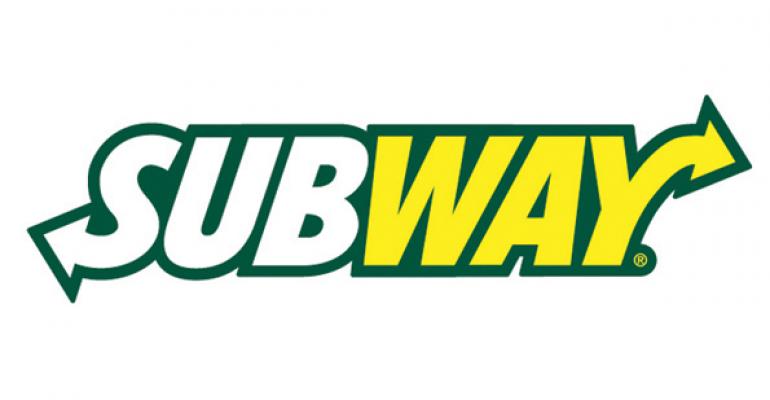Subway has a new set of ads featuring the comedian Tony Hale. But don’t look for them on TV.
The ads are digital shorts that can only be seen online, and for good reason: That’s where the Millennials the ads are targeting tend to live.
The campaign, which furthers the company’s #SaveLunchBreak effort, represents a shift in Subway’s ad thinking. No more one-size-fits-all advertising.
“We need to start doing a better job of activating through social,” Chris Carroll, Subway chief advertising officer, told Nation’s Restaurant News. “Don’t be so conservative, and have fun with it. The ads are fun, not safe.”
Carroll left Subway in 2005. He returned to the chain this summer after a decade spent working with other companies like the fast-casual chain Così and Liberty Tax Service. He arrived just as the big sandwich chain was working to reconfigure its advertising message after the sudden end of its successful Jared campaign after spokesman Jared Fogle pleaded guilty to child pornography and sex charges.
Catalyst and 360i developed the ads featuring Hale. In addition, Subway is currently preparing a new, national broadcast campaign featuring its new agency, BBDO. That campaign is slated to roll out in January.
Hale will not become a Subway spokesman, and he will only appear in the digital ads, at least for now. Carroll noted that if the ads become a “raging success” and Hale proves popular that he could be featured in more ads in the future.
With both the digital ads and the coming broadcast spots, Subway is working to remind customers of the freshness of its ingredients.
The chain became popular in the 1990s in part because it sold sandwiches with fresh ingredients. More recently, however, the chain has lost ground on that reputation to fast-casual chains like Panera Bread and Chipotle Mexican Grill. Subway wants to reiterate its strength on that front.
“The definition of fresh then is different from the definition of fresh today,” Carroll said. He said all of its ads would come around to the company’s strategic position that its food is fresh and better for consumers.
But the broadcast ads will be different from the digital ads featuring Hale, in which the comedian plays an office worker who tries to convince his coworkers to take a lunch break.
The Milford, Conn.-based chain kicked off its "Save Lunch Break" campaign with a “Buy One Give One” offer on National Sandwich Day in November. The company has shifted that campaign to digital to target Millennials.
Social media is a key element in the campaign because younger consumers are big consumers of social media. The company created the #SaveLunchBreak hashtag and worked with Twitter to release a sub emoji.
Subway surveyed workers and found that seven in 10 take a lunch break of 30 minutes or less, but younger workers are more likely to take a lunch break of 15 minutes or less.
“Millennials take the least amount of lunch time,” Carroll said. “They don’t know you’re supposed to take lunch.”
Subway, which has more than 26,000 locations in the U.S., is a huge lunch destination. And so the chain believes that it can benefit a lot simply by convincing more Americans to take time for lunch. “We own lunch,” Carroll said.
The company’s advertising in the past spoke to all consumers. The company now wants to target ads to more specific audiences. “We’re targeting Millennials with what might offend someone who is 50-years-old plus,” Carroll said.
In the first short, Hale walks around the office acting like he’s the subconscious of his coworkers, convincing them to take time for lunch. In another, to be released Friday, Hale is a “Lunch Guard” who acts like a lifeguard that protects people from overworking and skipping lunchtime or sleeping through it.
Hale is known for his role on the comedy series "Arrested Development" and the HBO series "Veep," for which he has twice won Emmy Awards for his role as the personal aide to the vice president. Hale helped write and produce the digital shorts.
Response to the ads has thus far been positive, Carroll said. “We’re really encouraged by it,” Carroll said. “It’s a new direction for the brand.”
It’s an edgier direction for the chain, which has used more benign ads featuring athletes and Fogle in the past. But Carroll said that’s a necessity for digital advertising and for talking with Millennials.
“If it’s too safe, it’s not the content anyone wants to watch,” he said. “It’s more fun.”
Carroll added that it’s faster and more freeing to create digital shorts than broadcast ads. “It’s a lot more fun,” he said. “You can take an idea and in a week have it on the air.”
Contact Jonathan Maze at [email protected]
Follow him on Twitter: @jonathanmaze





